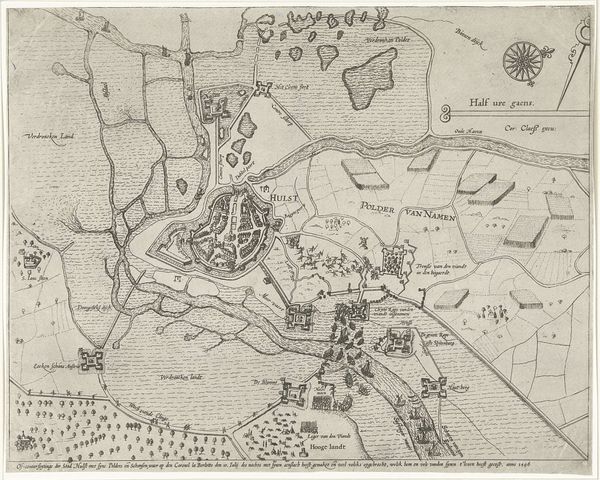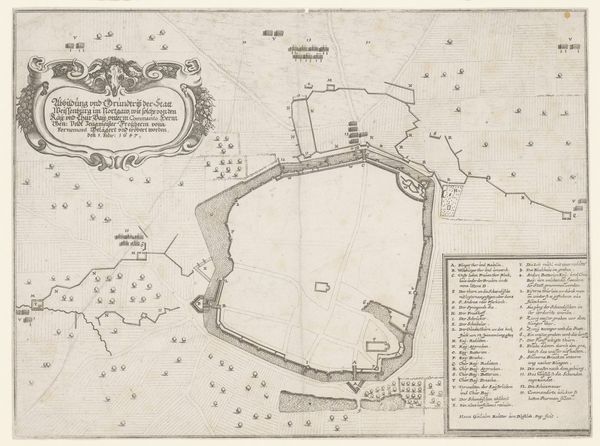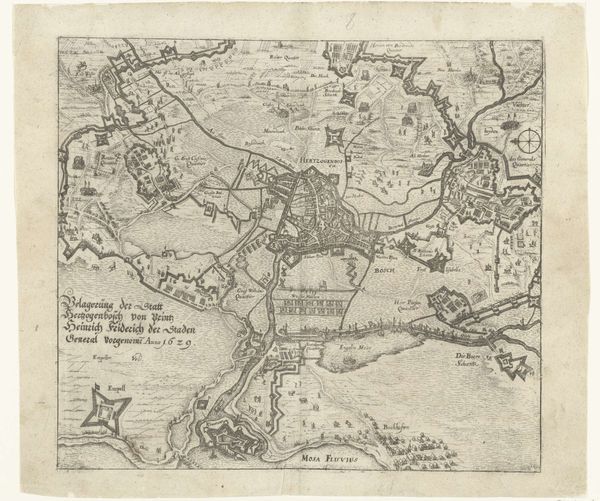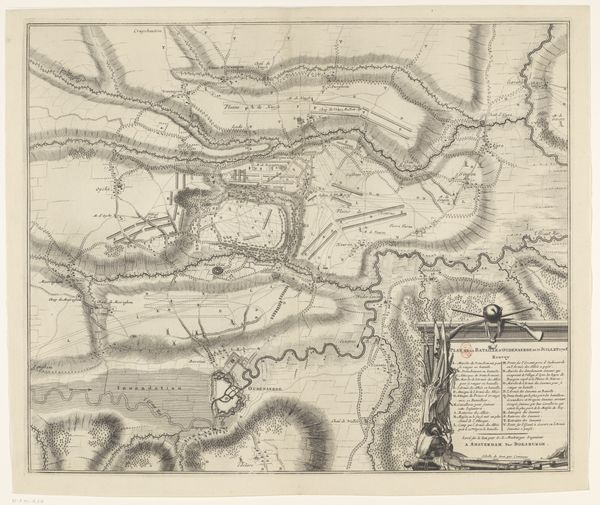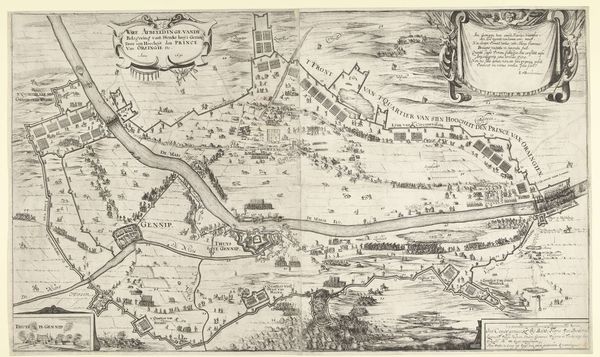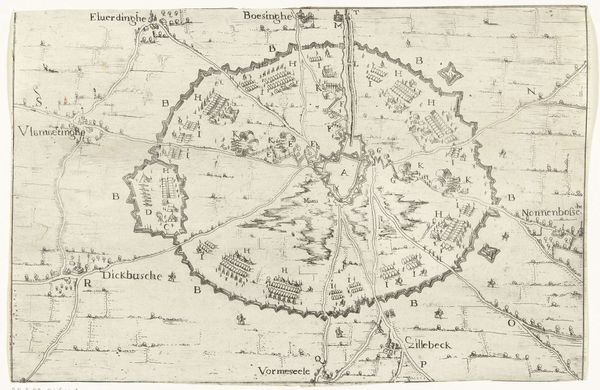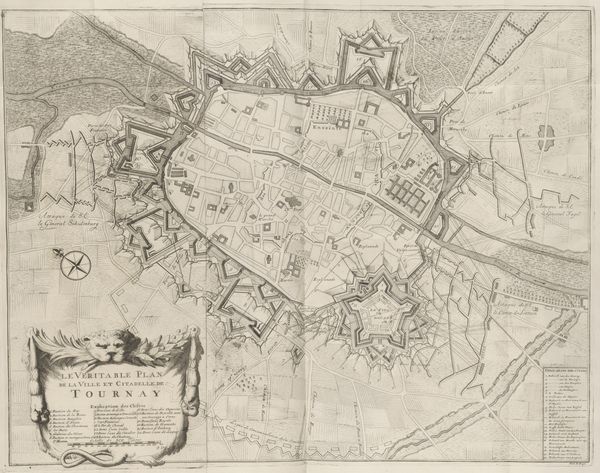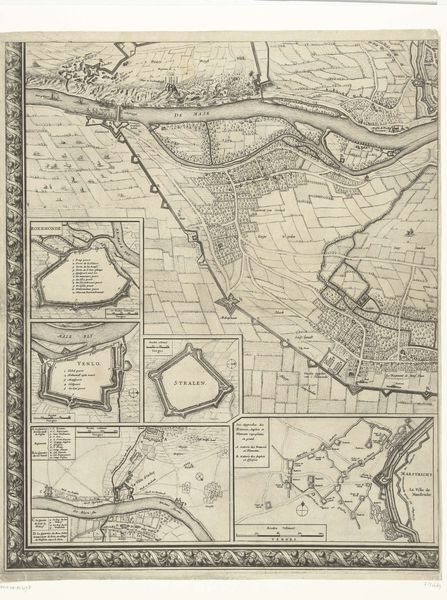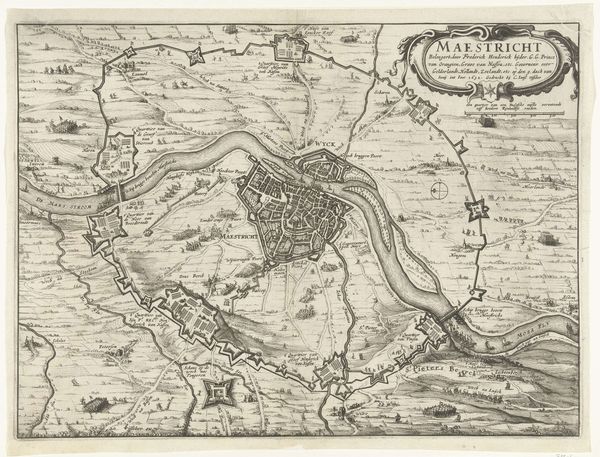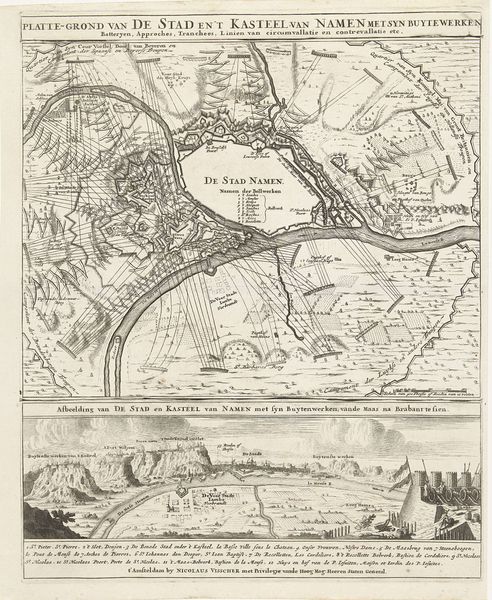
drawing, print, etching, ink
#
drawing
#
baroque
#
dutch-golden-age
# print
#
pen sketch
#
etching
#
landscape
#
ink
#
geometric
#
cityscape
Dimensions: height 253 mm, width 354 mm
Copyright: Rijks Museum: Open Domain
Abraham Dircksz. Santvoort’s etching from 1645, presents the siege of Hulst, dominated by the symbolic forms of military encampments and fortifications. These shapes carry deep historical weight. The star fortresses, such as the one surrounding Hulst, evolved from a need to withstand cannon fire, their angular bastions designed for defense. We see a similar impulse in the ancient ziggurats of Mesopotamia or even the layout of Roman camps—a primal need to protect and control space. Consider the swastika: initially a symbol of well-being and good fortune, it was later appropriated and distorted by the Nazi regime, becoming a symbol of terror. Likewise, the star fortresses represented here, while once symbols of security, also became emblems of conflict. The map then acts as a psychological landscape, reflecting our persistent drive to impose order on chaos, and the cyclical nature of defense and aggression.
Comments
No comments
Be the first to comment and join the conversation on the ultimate creative platform.
